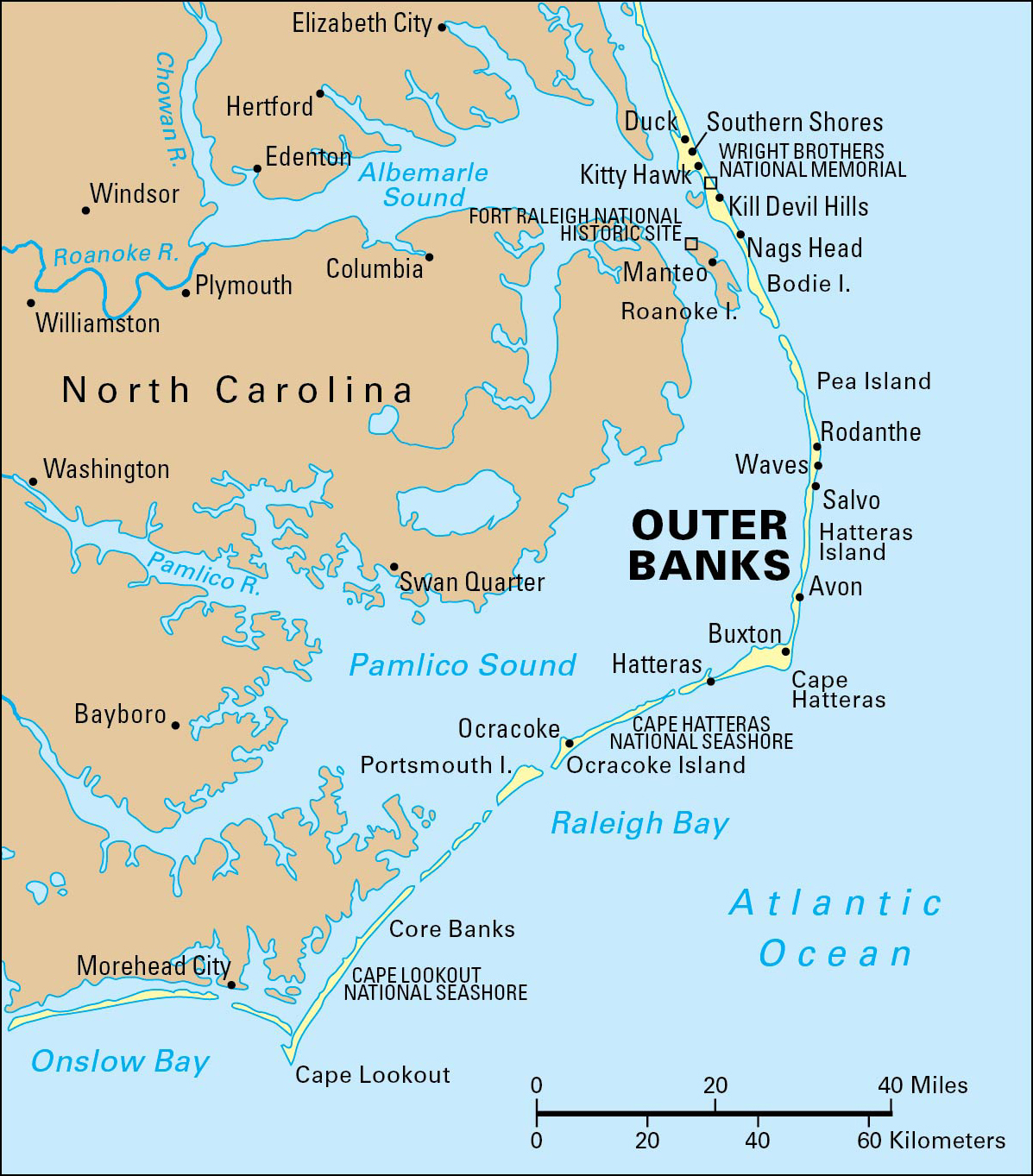Outer Banks are a series of barrier islands that lie along the Atlantic Coast of North Carolina in the southeastern United States. Barrier islands are long, narrow islands that lie parallel to the shoreline. The sandy islands of the Outer Banks stretch more than 200 miles (320 kilometers) south from southeastern Virginia to Cape Lookout, North Carolina.

Several sounds —shallow areas of water that separate the islands from the mainland—lie west of the Outer Banks. From north to south, these include the Currituck, Ablemarle, Croatan, Roanoke, Pamlico, and Core sounds. Major landforms of the Outer Banks include Knotts, Roanoke, Hatteras, Ocracoke, and Portsmouth islands, and the Core Banks. Most of the larger islands are connected by a series of bridges, and ferries service other destinations. 
Most of the Outer Banks lie in Dare County, North Carolina. From north to south, visitors pass such towns and villages as Corolla, Duck, Southern Shores, Kill Devil Hills, Kitty Hawk, Nags Head, Manteo, Rodanthe, Waves, Salvo, Avon, Buxton, Frisco, Hatteras, and Ocracoke. Tourism is the area’s leading industry, and beaches are a top attraction. Boating, fishing, kite flying, shopping, and sightseeing are also important to the area’s economy. One popular site is Wright Brothers National Memorial, south of Kitty Hawk . Brothers Orville and Wilbur Wright conducted the first powered airplane flight at the ever-windy Kill Devil Hills in 1903.
A number of areas in the Outer Banks serve as home for wildlife and native plants and preserve unspoiled, scenic views. These areas include the Currituck and Pea Island national wildlife refuges, the Kitty Hawk Woods Coastal Reserve, and the Cape Hatteras and Cape Lookout national seashores. Jockey’s Ridge State Park, in Nags Head, has some of the highest sand dunes on the East Coast. Cape Hatteras is a scenic promontory at the southeastern tip of Hatteras Island. The nearby Diamond Shoals are dangerous for ships, and so the area was nicknamed Graveyard of the Atlantic. The Cape Hatteras Lighthouse, which rises about 200 feet (61 meters), was constructed about 1870 to warn ships away from these hazardous waters.
Native Americans who spoke an Algonquian language lived in and near the Outer Banks long before English explorers arrived in the 1580’s. Between 1585 and 1587, the English soldier and explorer Sir Walter Raleigh organized two colonies on Roanoke Island. When he arrived back at Roanoke in 1590, Raleigh found that the colony had been abandoned. One of the most popular annual events in North Carolina is the performance of The Lost Colony. This historical drama is staged at Fort Raleigh in Manteo every summer. The play portrays some of the hardships faced by the early English colonists who disappeared mysteriously from Roanoke Island. See Lost Colony .
Permanent English settlement of the Outer Banks began in the 1660’s. In the late 1600’s and early 1700’s, pirates terrorized North Carolina’s coastline. Most piracy along the Atlantic Coast ended with the death of the pirate Blackbeard in a battle near Ocracoke Island in 1718. English settlers established a number of towns in the first half of the 1700’s.
